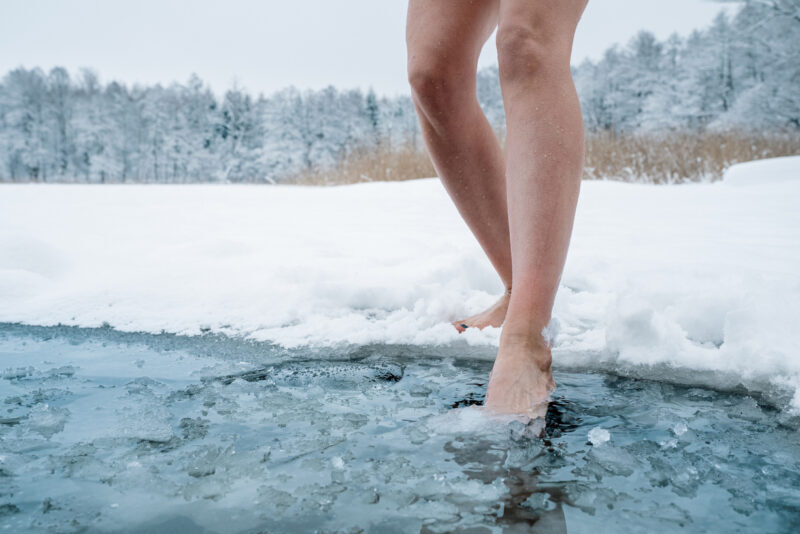Although cold water immersions, also known as cold plunges, have become very popular in the past few years – with many professional athletes praising the benefits of the icy dips, and many others posting videos on social media about their experiences with cold plunges – there are things you should know before considering taking a cold plunge yourself.
While cold water immersions can be beneficial, there are some potential risks and mistakes that people can make when using them. Here is a list of some “dos” and “don’ts” when it comes to cold plunges.
The Do’s of Taking a Cold Plunge
You’ve decided a cold plunge is something you want to try… now what? Take these tips into consideration as you plan your first cold dip.
- Do Use Cold Plunges for Recovery: A cold plunge can be effective in reducing muscle soreness and inflammation. The cold temperature of the water constricts blood vessels, which reduces swelling and inflammation. Cold water can also help to numb the nerves in the affected area, which can help with pain relief.
- Do Check the Temperature of the Water: Water temperature is important when it comes to cold water immersion. The recommended water temperature should be between 50-59 degrees Fahrenheit. Water that is too cold could lead to hypothermia while water that is too warm will not have the desired effect.
- Do Build Up Slowly: If you are new to cold plunges, it’s important to gradually increase your exposure to cold water. Start with a short amount of time, 1-3 minutes, and increase the time slowly as your body becomes more accustomed to the cold temperature.
- Do Stay Active After a Cold Plunge: Staying active after a cold plunge will help increase blood flow to your muscles and prevent stiffness. Stretching and even some light exercise are helpful after getting out of the cold water.
- Do Stay Hydrated: Hydration is important in everyday life, but especially if you’re using cold plunges. The cold water makes your blood vessels constrict, which makes it more difficult for the body to circulate fluids. Drinking water before and after a cold water immersion will help combat dehydration.
Keeping your cold plunge tub clean and at the correct temperature is a necessary “do” when it comes to effectively using cold plunges. 10X Health has created a revolutionary iceless cold plunge tub that includes a built-in filtration system that keeps your cold plunges clean and ready for you when you need them.
The Don’ts of Taking a Cold Plunge
Cold water immersion has many benefits. Not only can cold water help the body physically, but it can also have a positive effect on your mental well-being. However, there are risks that should not be ignored. These “don’ts” should help you avoid making any mistakes when it comes to taking a cold plunge.
- Don’t Overdo It: While cold plunges can be beneficial for many ailments, it’s important not to spend too much time in the cold water. Spending too much time in cold water can lead to hypothermia or frostbite. The recommended maximum amount of time to spend immersed in cold water is 10-15 minutes, and that is for someone who has experience with cold plunges.
- Don’t Use Cold Plunges as a Substitute for Warming Up or Stretching: Cold plunges should be used as a supplement to your recovery routine, not as a substitute for stretching or warming up. It is important to properly warm up before exercising to prevent injury and increase blood flow to the muscles.
- Don’t Use Cold Plunges if You Have Certain Pre-Existing Conditions: Cold plunges may not be suitable for people with cardiovascular disease, high blood pressure, diabetes, or poor circulation.
- Don’t Use Cold Plunges Too Often: Cold plunges should not be used every day. It is recommended that ice baths should be used 2-3 times per week.
- Don’t Use Cold Plunges as a Way to “Toughen Up:” Some people may want to prove their resilience by taking a cold water plunge. This mindset can be dangerous and cause someone to overuse cold plunges. It’s important to use cold plunges as a recovery tool, not as a way to “toughen up.”
Using a cold plunge for recovery can be a great addition to your workout routine, but it’s important to know how to use them. Following these dos and don’ts can help you safely navigate using cold plunges effectively.
—
Questions about using cold plunges for recovery in your workout routine? Reach out to 10X Health, and we’ll help get you started.
